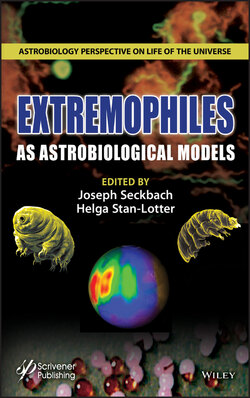Читать книгу EXTREMOPHILES as Astrobiological Models - Группа авторов - Страница 40
2.7 Methanogenesis in Non-Methanogenic Conditions
ОглавлениеAlthough methane can be produced abiotically, more than eighty per cent of the methane existing in the Earth atmosphere is generated by methanogenic archaea. With only a few exceptions, methanogenic activities are normally detected in environments with circumneutral pH and negative (reduced) redox potentials [2.66] [2.102]. These conditions are very different from those detected in the Tinto basin (acidic and high (oxidized) redox potentials). For a long time, methanogenic activities were not considered to be operating in the Tinto basin for this reason.
After the detection of methane in the borehole fluids of the MARTE project and in the Martian atmosphere [2.46] [2.81], regular inspections for methanogenic activity were implemented in the study of the anoxic sediment of the Tinto basin. The first sampling station in which methane generation was detected was Campo de Galdérias, at the origin of the river [2.100]. Sediments from this station exhibited specific locations with negative reduced redox potential, surrounded by the high positive oxidation redox potential characteristic of the river. Pressure applied to the ground around this sampling site released gases occluded in the sediments. Microcosms using these reduced sediments showed very active methane generation after reaching negative redox potentials and a significant pH increase, following the spike with different methanogenic substrates. The highest methane production was obtained after addition of methanol [2.100].
A second site, JL Dam, was selected for further analysis. Cores from this sampling site exhibited distinctive black bands with negative reduced redox potential and circumneutral pH among acidic reddish-brown sediments with positive oxidized redox potentials, similar to those detected in the sediments collected along the course of the river. The sequence of amplified 16S rRNA gene from the blackish bands corresponded to Methanosaeta concilii. Enrichment cultures using different methanogenic substrates allowed the identification of M. concilii using organic substrates, Methanobacterium bryantii using H2 and Methanosarcina barkeri using methanol [2.100].
How can we explain the development of methanogenic activities in an ecosystem in which the characteristic pH and redox potential are the opposite of the required conditions? This apparent contradiction is resolved when we analyze the results at the microscopic level. The generation of micro-niches in a semi-solid matrix, such as sediments, or even more, in a solid matrix within a deep subsurface rock, could facilitate the growth of microorganisms generating environmental conditions quite different from the restrictive ones existing in the ecosystem [2.31]. As mentioned above, the use of fluorescence in situ hybridization allowed the detection of these micro-niches in the porous rocks of the deep subsurface of the IPB, many of which included biofilms with different types of microorganisms, sharing space and metabolisms [2.31].
The presence of methanogens in an environment controlled by iron has important astrobiological implications since it could be a model for the biotic generation of Martian atmospheric methane [2.46] [2.81] [2.105]. The recurrent argument that the environmental conditions of Mars are not suitable for generating biological methane could be contradicted by the methanogenic activities detected in the sediments of Rio Tinto and the subsurface of the IPB, a geochemical and mineralogical terrestrial analogue of Mars [2.36] [2.37] (Figure 2.2).
